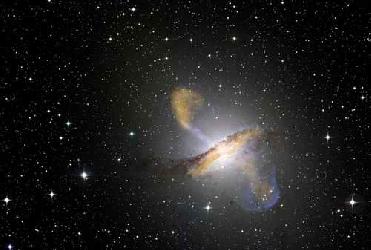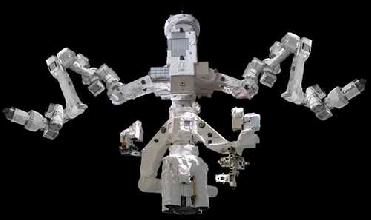
Colour composite image of Centaurus A, revealing the lobes and jets emanating from the active galaxy's central black hole. ESO image
LONDON (BNS): The Atacama Pathfinder Experiment (APEX) telescope in Chile has helped astronomers delve into the insights of the active galaxy Centaurus A (NGC 5128). For the first time, the APEX has helped clicking images at sub-millimetre wavelengths at the jets and lobes emanating from the central black hole.
Astronomers said that Centaurus A is the nearest giant galaxy, at a distance of about 13 million light-years in the southern constellation of Centaurus. It is an elliptical galaxy, currently merging with a companion spiral galaxy, resulting in areas of intense star formation and making it one of the most spectacular objects in the sky. They said that Centaurus A hosts a very active and highly luminous central region, caused by the presence of a super-massive black hole, and is the source of strong radio and X-ray emission.
Astronomers said that in the image, one can see the dust ring encircling the giant galaxy, and the fast-moving radio jets ejecting from the galaxy centre, signatures of the super-massive black hole at the heart of Centaurus A. �In sub-millimetre light, we see not only the heat glow from the central dust disc, but also the emission from the central radio source and � for the first time in the sub-millimetre � the inner radio lobes north and south of the disc. Measurements of this emission, which occurs when fast-moving electrons spiral around the lines of a magnetic field, reveal that the material in the jet is travelling at approximately half the speed of light. In the X-ray emission, we see the jets emerging from the centre of Centaurus A and, to the lower right of the galaxy, the glow where the expanding lobe collides with the surrounding gas, creating a shockwave,� explained the astronomers.
 Next Article
Next Article













The Indian Air Force, in its flight trials evaluation report submitted before the Defence Ministry l..
view articleAn insight into the Medium Multi-Role Combat Aircraft competition...
view articleSky enthusiasts can now spot the International Space Station (ISS) commanded by Indian-American astr..
view article